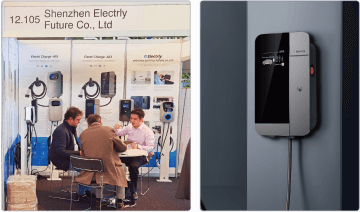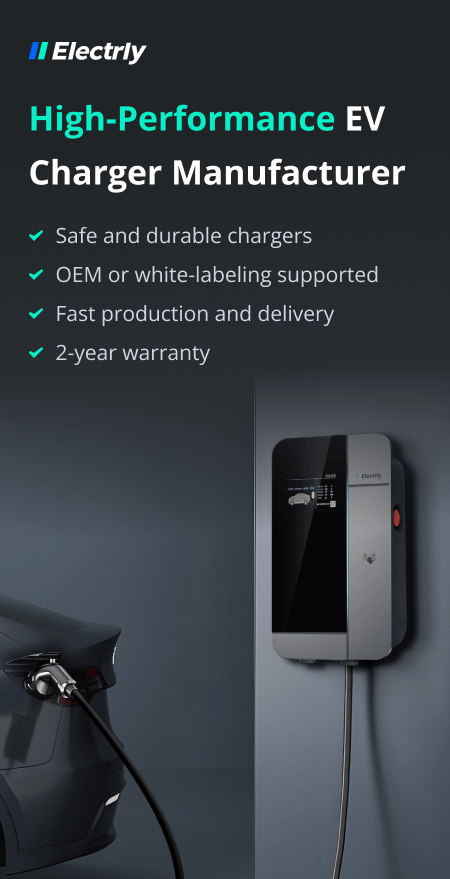The JuiceBox 40 and ChargePoint Home Flex are currently among the best-selling and widely available electric vehicle chargers in the market. These two chargers offer similar features that make them highly appealing to consumers who have recently purchased an electric vehicle. Additionally, they are priced similarly and feature the same charging port, which makes them compatible with almost any hybrid or electric vehicle available.
But there are also a few key differences between them that could send customers shopping for one over the other. So which is best? Read on to find out.
How Do JuiceBox and ChargePoint Home Flex Compare?
The JuiceBox 40 and the ChargePoint Home Flex have a few major differences that may swing shoppers to opt for one over the other.
Installation
The JuiceBox 40 is almost ready to be set up from the box, coming with an extension plug that can fit into any NEMA 14-50 outlet, the standard used for electric vehicles, RVs, and motor homes.
The ChargePoint Home Flex requires a bit more work to get installed properly, since it has a few extra screws required to get it mounted to a wall, but it is still a fairly straightforward process.
Speed
Users have reported that the JuiceBox 40 is capable of charging a Jeep Wrangler 4xe, a plug-in hybrid version of the classic SUV with a 17-KWH battery, in as little as two hours. Depending on the type of vehicle being used, and the type of JuiceBox – as the number in the name represents the amount of power it can output – customers can expect faster or slower charge times.
The ChargePoint Home Flex is capable of adding about 37 miles of range per hour to your EV or plug in hybrid. The ChargePoint is also capable of adjusting how much power it puts out, from 16-50 amps at a time, while the JuiceBox has a fixed number based on which version you purchase, the 32, 40, or 48.
Apps
The ChargePoint and the JuiceBox both have mobile apps that allow users to monitor their electric vehicle's charging status, and even schedule a charge time so their chargers turn on and off automatically.
The apps even work on their brand of chargers that aren't installed in the home, meaning electric vehicle drivers can monitor their cars when using public charging networks on road trips or while waiting for a top up.
Price
The JuiceBox 40 costs $649.99, while the ChargePoint Home Flex costs $749.00, though it can usually be found on sale for $50 off.
Getting a charger professionally installed can be pricey as well, with the low end of installation prices being about $300, and the higher end being closer to $1000. Fortunately, both of these chargers only require a mounting bracket and some screws, making them a great budget option for electric vehicle owners.
Electric vehicle owners should be aware of the price of charging their cars as well. Prices can vary from 9 cents to 35 cents, with the national average being roughly 14 cents per charge.
What Features Do JuiceBox and ChargePoint Home Flex Share?
Although there are a few differences that we have already outlined, the JuiceBox 40 and ChargePoint Home Flex do share a few key features.
Both the JuiceBox 40 and the ChargePoint Home Flex come with the J17772 connector, the industry standard for electric vehicles. This means that both charges should have no issues charging almost any electric vehicle available on the market.
The outlier to that rule is Tesla, which uses its own proprietary connector. However, Tesla to J17772 adaptors are available for around $50 and can be attached to the end of the charger.
Both the JuiceBox 40 and Chargepoint Home Flex can be professionally installed and hardwired into the wall, or plugged in using a NEMA 14-50 or 6-50 plug, the same type that a dryer would use. Users have options for how permanent they would like their charging station to be.
Both chargers come with a three year warranty, to ensure that if there are any issues during that period, the customer will be well taken care of. Both also have mobile apps, so users can monitor the status of their car while charging, or set schedules.
Perhaps most importantly, both the JuiceBox 40 and ChargePoint Home Flex are capable of working both indoors and outdoors, meaning if you park your car outside overnight, you don't have to run a long cable from inside to the car while it charges.
Both chargers are more than capable of fully charging a plug in hybrid in a matter of hours, and a fully electric car overnight. They are also energy star certified, meaning they will not be using too much electricity while charging, both keeping your energy bill down and ensuring the environmental impact is minimal.
Finding out which is for you comes down to a matter of preference, price, and availability.
JuiceBox vs ChargePoint: Which One Is Your Better Choice?
There is no definitive answer, as what one user needs may vary from what another user needs.
However, since the JuiceBox 40 is generally easier to install, it is an easier suggestion for most people over the ChargePoint Home Flex.
The JuiceBox 40 is a great overall charger for most people's needs, able to juice up a plug in hybrid or electric vehicle in a matter of hours, giving drivers the range they need at a price point that doesn't break the bank. Users are able to install the charger virtually anywhere in or outside of their home, provided they have the proper wiring, can monitor their vehicle's status from a mobile app, and even schedule charge times to potentially extend battery life.
No matter which choice customers make between the JuiceBox 40 or the ChargePoint Home Flex, they will be satisfied with their new electric vehicle charger. Both come with excellent features, are easy to use and install, and are built to last for years to come.
One thing to consider when buying an electric vehicle charger is how future proof it is. Ensuring that your charger is ready for what the future of electric vehicles has in store – bigger batteries with longer rangers, mostly – could push buyers in one direction over another.
Conclusion
The JuiceBox 40 is the best option for those looking for ease of use and ease of installation, but the ChargePoint Home Flex is a suitable alternative. Between the two customers of either will be left satisfied with their purchase and be able to charge their car in a timely manner.


